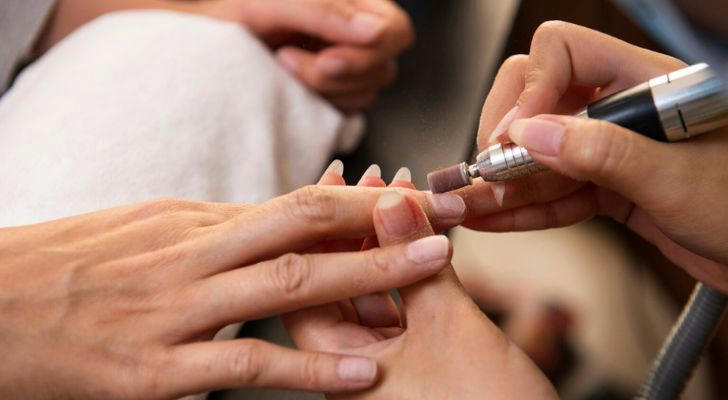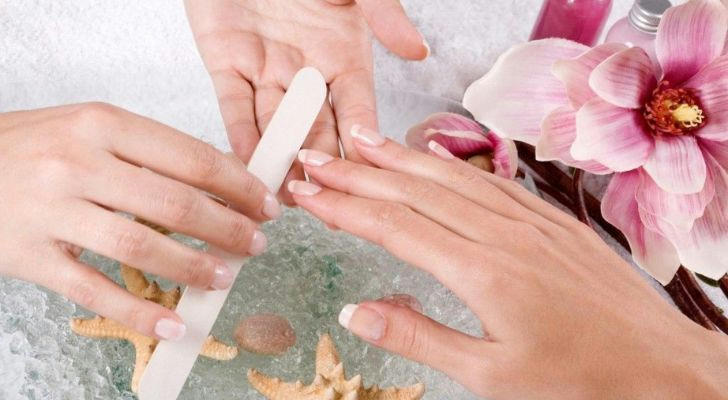How Often Should You Get a Manicure?
A manicure is more than just a beauty treatment—it's a way to take care of one's nails and hands, enhance personal style, and unwind. However, many people wonder how often they should schedule a manicure to keep their nails looking fresh, healthy, and well-maintained. The answer to this question depends on several factors, including nail growth, personal habits, and the type of manicure chosen.

This article delves into the factors that influence how often manicures should be done, the different types of manicures, and the benefits and downsides of frequent visits to the nail salon.
1. The Importance of Regular Manicures
Nail Health
Regular manicures help maintain the health of the nails by removing dead skin, moisturizing the cuticles, and ensuring nails remain strong and clean. A professional manicure also prevents nails from becoming too brittle, weak, or prone to breaking.
Aesthetic Appeal
For those who enjoy having polished, neat nails, frequent manicures can help maintain that fresh, sleek look. A well-manicured hand can elevate an individual's overall appearance, making it a significant aspect of self-care and grooming.
Hygiene and Protection
Nail salons often provide services like sanitizing nails, trimming cuticles, and treating fungal or bacterial infections. A manicure also ensures nails are protected from environmental factors like harsh weather, chemicals, and constant exposure to water.
2. Factors Affecting How Often a Manicure Should Be Done
Nail Growth
Nail growth is one of the biggest determining factors when it comes to scheduling manicures. On average, fingernails grow at a rate of approximately 1/8 inch (about 3 millimeters) per month. If nails grow quickly, individuals may need manicures more frequently, as they will see noticeable regrowth at the base of their nails.
For most people, nail growth will be visible within 1-2 weeks, leading to a noticeable difference between the nail bed and the color applied to the nails. In this case, scheduling a manicure every 2 weeks may be ideal to keep nails looking fresh.
Type of Manicure
The type of manicure chosen will also affect the frequency of appointments. Different nail treatments have different lifespans, and understanding how each works can help individuals decide when to return for maintenance.
- Traditional Manicure:
Traditional manicures, which involve basic nail care and polish application, typically last about 5-7 days before chipping or fading. Individuals who prefer these manicures may need a touch-up or full redo every week to 10 days.
- Gel Manicure:
Gel manicures use UV or LED light to cure the polish, making it last longer than regular nail polish. A gel manicure can last anywhere from 2 to 3 weeks before showing signs of regrowth or chipping. For individuals who like the durability and high shine of gel polish, bi-weekly appointments are recommended.
- Dip Powder Manicure:
Dip powder manicures involve applying colored powder to nails and sealing it with a bonding solution. This type of manicure is known for its long-lasting results, often lasting 3 weeks or more. However, depending on nail growth, some people may prefer to go every 2 to 3 weeks for touch-ups.
- Acrylic Nails:
Acrylic nails are artificial nails that are applied over the natural nail using a mixture of liquid monomer and powder polymer. They are generally more durable and can last 3 to 4 weeks. However, acrylic nails require regular maintenance and filling in as the natural nail grows, so appointments every 2 to 3 weeks are common.

Nail Care Routine at Home
If an individual maintains a good nail care routine at home, they might find that they can extend the time between professional manicures. For example, regularly moisturizing the nails and cuticles, using gentle nail products, and avoiding harsh chemicals can help keep nails healthy and strong, potentially reducing the need for frequent salon visits.
Additionally, avoiding frequent nail damage—such as biting, excessive exposure to water, or using nails as tools—can prolong the life of a manicure.
Lifestyle Factors
An individual’s lifestyle may also impact how often they need to schedule a manicure. Those who engage in physical activities, gardening, or work with their hands might find their nails experience wear and tear more quickly. On the other hand, individuals who work in office settings or have sedentary jobs may notice their manicures lasting longer.
Budget and Personal Preferences
Budget constraints are another key factor. Professional manicures, especially those involving more complex treatments like gel or acrylic nails, can be expensive. Many people choose to schedule manicures based on how much they are willing to spend on nail care. Others may prefer a simpler, more frequent manicure to maintain an always polished appearance.
3. When to Get a Manicure: A Breakdown by Frequency
Weekly Manicures
Weekly manicures are typically more common for those who want a low-maintenance but always fresh look. These individuals often prefer basic manicures with traditional polish, as it allows them to experiment with different colors each week. Additionally, people who are rough on their nails, such as those involved in physical labor, may choose to refresh their nails every week to avoid chipping or peeling.
Bi-Weekly Manicures
For those who opt for gel or dip powder manicures, a bi-weekly schedule is often ideal. Gel manicures, in particular, require a little more time and investment but provide a longer-lasting finish. This allows people to enjoy a neat look without worrying about constant touch-ups. The bi-weekly schedule is the sweet spot for most individuals seeking convenience and durability.
Monthly Manicures
Acrylic nails or dip powder nails are popular options for individuals who want long-lasting results. Since these nails can last up to a month, many individuals schedule monthly appointments to get a fill or a completely new set of nails. People who prefer a minimalist approach may also choose to visit the salon once a month for a quick manicure, keeping their nails looking neat with minimal effort.
4. Signs It's Time for a Manicure
Sometimes, it's easy to tell when a manicure is due for a refresh. Some of the most common signs that it's time to book an appointment include:
Chipping or Peeling: One of the most obvious signs that a manicure is overdue is chipped or peeling nails. This happens most often with regular polish and may occur within a few days of the manicure.
Regrowth: As nails grow, the line of demarcation between the natural nail and the polish becomes more visible. When this line becomes noticeable, it’s time for a touch-up.
Nail Damage: If nails become weak or damaged from a previous manicure or from exposure to harsh chemicals, a professional touch is needed to restore their strength and appearance.
Fading or Dulling: Over time, nail polish can lose its shine, and gel manicures can become dull or slightly chipped. When the shine fades, it's a sign that a new layer of polish or gel is needed.

5. Conclusion
The ideal frequency for manicures depends on a variety of factors, including nail growth, lifestyle, and the type of manicure chosen. While some people prefer to have their nails done weekly for a fresh and polished appearance, others may only need a manicure once a month if they choose long-lasting options like acrylic or dip powder nails. By taking into account individual nail health, habits, and personal preferences, it’s possible to strike a balance between maintaining beautiful nails and managing time and budget effectively.
Ultimately, maintaining a manicure routine that fits one's lifestyle, preferences, and budget will ensure that nails stay healthy and look great at all times.
